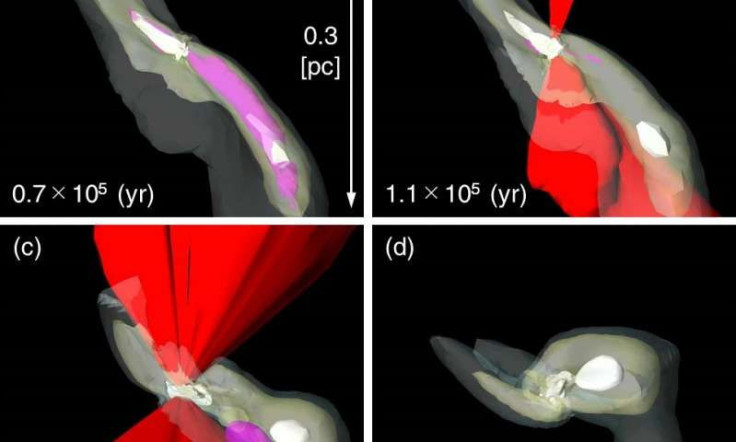Supermassive Black Hole Formation Fueled By Supersonic Gas From Big Bang

Researchers have successfully used a supercomputer simulation to recreate the formation of a massive black hole, which they say could be the source of the birth of the largest and oldest supermassive black holes recorded in our universe.
The team of international researchers who published their study in Science has proposed that massive black holes were formed from supersonic gas streams left over from the Big Bang, and which then merged to form supermassive black holes.
This, the researchers say, would help explain the presence of supermassive black holes 13 billion light years away, and which where formed when the universe was 5 percent its current age.
"This is significant progress. The origin of the monstrous black holes has been a long-standing mystery and now we have a solution to it," said author and Kavli Institute for the Physics and Mathematics of the universe (Kavli IPMU) principal investigator Naoki Yoshida.
Early black holes are theorized to have formed with the death of the first stars in our universe. These black holes grow at a certain rate which has been calculated, and the presence of these supermassive black holes 13 billion light years away do not correspond to the time-line set by this growth period.
Existing theories of black hole formation due to death of a star or collapse of a neutron star, do not account for the growth of black holes into supermassive black holes in the time period of their existence.
The team of Yoshida and JSPS overseas research fellow Shingo Hirano, who are currently at the University of Texas at Austin, in their study, demonstrated a model of a promising physical process through which these supermassive black holes could have formed in the recorded time period.
The key was incorporating the effect of supersonic gas motions with respect to dark matter. The simulation showed them that a massive clump of dark matter formed 100 million years after the Big Bang. The supersonic gas streams were caught by this dark matter and resulted in the formation of a dense cloud of turbulent gas.
The protostar that eventually formed inside used the gas to feed on and grew to mammoth proportions. When it reached the size of around 34,000 times the size of our sun, the gravity of the star caused it to collapse on itself.
"Once reaching the mass of 34,000 times that of our sun, the star collapsed by its own gravity, leaving a massive black hole. These massive black holes born in the early universe continued to grow and merge together to become a supermassive black hole," said Yoshida in a report by Phys.Org .
This study helps us understand how the supermassive black holes came into being in the time that they did. The simple merging together of already giant protostar related black holes, seems to answer this efficiently.
With NASA’s James Webb Space Telescope set to be launched next year, the number of black hole discoveries will increase, helping us identify anomalies in the findings and conclusively understand black holes.
© Copyright IBTimes 2024. All rights reserved.





















